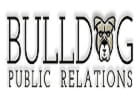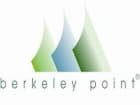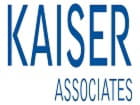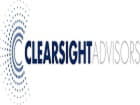Huntington Bancshares Incorporated (NASDAQ: HBAN; www.huntington.com) reported net income for the 2017 third quarter of $275 million, a $148 million, or 116%, increase from the year-ago quarter. Earnings per common share for the 2017 third quarter were $0.23, up $0.12, or 109%, from the year-ago quarter. Excluding approximately $31 millionpretax of FirstMerit acquisition-related net expenses, or $0.02 per common share after tax, adjusted earnings per common share were $0.25. Tangible book value per common share as of 2017 third quarter-end was $6.85, a 6% year-over-year increase. Return on average assets was 1.08%, return on average common equity was 10.5%, and return on average tangible common equity was 14.1%. Total revenue increased 17% over the year-ago quarter.
"We earned record net income for the second consecutive quarter as we continue to achieve our long-term financial goals and to deliver sector-leading returns for our shareowners while maintaining our aggregate moderate-to-low risk appetite," said Steve Steinour, chairman, president, and CEO. "The 2017 third quarter marked the one-year anniversary of the largest acquisition in Huntington's history, and we have substantially completed the integration. We fully implemented $255 million of annualized cost savings, and continue to execute on the deal-related revenue synergies. Consistent execution of our core organic growth strategies, coupled with the realization of these acquisition economics, are the key drivers of third quarter results."
"Huntington's strategic focus on consumers, small- and medium-sized businesses, and auto finance has positioned us to grow through the ongoing industry headwinds in corporate banking. The third quarter results illustrated continued momentum in residential mortgage, automobile, and RV and marine consumer lending as well as asset finance. The third quarter also marked the end of the 2017 fiscal year for the U.S. Small Business Administration, during which Huntington earned the distinction of being the second largest SBA 7(a) lender in the nation for the third year in a row and the largest in our footprint for the tenth consecutive year," Steinour said.
"As a result of the meaningful relationships we developed with our consumer and business customers, Huntington enjoys a very granular deposit base. We are pleased with the quarter's deposit growth while carefully balancing our deposit costs in the face of rising interest rates."
Last week Huntington announced that the Board declared a quarterly cash dividend on the company's common stock of $0.11 per share, which represents a $0.03 per share, or 38%, increase over the prior quarter. The dividend is payable on January 2, 2018, to shareholders of record on December 18, 2017.
Specific 2017 Third Quarter Highlights:
- $162 million, or 17%, year-over-year increase in fully-taxable equivalent revenue, comprised of a $135 million, or 21%, increase in fully-taxable equivalent net interest income and a $28 million, or 9%, increase in noninterest income
- Net interest margin of 3.29%, an increase of 11 basis points from the year-ago quarter
- $32 million, or 4%, year-over-year decrease in noninterest expense, including a net decrease of $128 million of FirstMerit acquisition-related expense
- $7.6 billion, or 12%, year-over-year increase in average loans and leases, comprised of a $4.0 billion, or 14%, increase in consumer loans and a $3.5 billion, or 11%, increase in commercial loans
- $5.6 billion, or 31%, year-over-year increase in average securities, including a net increase of $0.3 billion of direct purchase municipal instruments in our Commercial Banking segment
- $11.5 billion, or 19%, year-over-year increase in average core deposits, driven by a $5.5 billion, or 45%, increase in interest-bearing demand deposits, a $2.7 billion, or 30%, increase in savings and other domestic deposits, and a $1.7 billion, or 8%, increase in noninterest-bearing demand deposits
- Net charge-offs equated to 0.25% of average loans and leases, representing the fourteenth consecutive quarter below the long-term target range of 0.35% to 0.55%
- Nonperforming asset ratio of 0.56%, down from 0.61% a quarter ago and 0.72% a year ago
- Repurchase of $123 million of common stock (9.6 million shares at an average cost of $12.75 per share)
- $0.37, or 6%, year-over-year increase in tangible book value per common share (TBVPS) to $6.85
Fully-taxable equivalent (FTE) net interest income for the 2017 third quarter increased $135 million, or 21%, from the 2016 third quarter. This reflected the benefit from the $13.2 billion, or 17%, increase in average earning assets coupled with an 11 basis point improvement in the FTE net interest margin (NIM) to 3.29%. Average earning asset growth included a $7.6 billion, or 12%, increase in average loans and leases and a $5.6 billion, or 31%, increase in average securities. The NIM expansion reflected a 26 basis point increase in earning asset yields and a 4 basis point increase in the benefit from noninterest-bearing funds, partially offset by a 19 basis point increase in funding costs. FTE net interest income during the 2017 third quarter included $27 million, or approximately 12 basis points, of purchase accounting impact.
Compared to the 2017 second quarter, FTE net interest income increased $14 million, or 2%. Average earning assets increased $1.1 billion, or 1%, sequentially, while the NIM decreased 2 basis points. The decrease in the NIM reflected a 7 basis point increase in the cost of interest-bearing liabilities, partially offset by a 3 basis point increase in earning asset yields and a 2 basis point increase in the benefit from noninterest-bearing funds. The purchase accounting impact on the net interest margin was approximately 12 basis points in the 2017 third quarter compared to approximately 15 basis points in the prior quarter.
Average earning assets for the 2017 third quarter increased $13.2 billion, or 17%, from the year-ago quarter, primarily reflecting the impact of the FirstMerit acquisition. Average securities increased $5.6 billion, or 31%, which included a $0.3 billion increase in direct purchase municipal instruments in our commercial banking segment. Average residential mortgage loans increased $1.4 billion, or 20%, as we continue to see the benefits associated with the ongoing expansion of our home lending business. Average RV and marine finance loans increased $1.4 billion, or 151%, reflecting the success of the well-managed expansion of the acquired business into 17 new states over the past year.
Compared to the 2017 second quarter, average earning assets increased $1.1 billion, or 1%. Average loans and leases increased $0.9 billion, or 1%, primarily reflecting growth in residential mortgage, automobile, and RV and marine loans partially offset by a decline in average commercial and industrial loans. Average commercial and industrial loans were negatively impacted by the seasonal decline in automobile floorplan lending, a reduction in mortgage warehouse lending, and continued runoff in corporate banking, partially offset by growth in asset finance.
Average total deposits for the 2017 third quarter increased $11.0 billion, or 17%, from the year-ago quarter, while average total core deposits increased $11.5 billion, or 19%. Average total interest-bearing liabilities increased $10.9 billion, or 19%, from the year-ago quarter. These increases primarily reflect the impact of the FirstMerit acquisition. Average demand deposits increased $7.2 billion, or 22%, comprised of a $5.1 billion, or 24%, increase in average commercial demand deposits and a $2.1 billion, or 20%, increase in average consumer demand deposits. Average long-term debt increased $0.5 billion, or 5%, reflecting the issuance of $2.7 billion and maturity of $1.6 billion of senior debt over the past five quarters.
Compared to the 2017 second quarter, average total core deposits increased $1.3 billion, or 2%, primarily reflecting a $1.1 billion, or 6%, increase in money market deposits and a $0.6 billion, or 1%, increase in average demand deposits.
Reported noninterest income for the 2017 third quarter increased $28 million, or 9%, from the year-ago quarter, primarily reflecting the impact of the FirstMerit acquisition. Card and payment processing income increased $9 million, or 21%, due to higher credit and debit card related income and underlying customer growth. Capital markets fees increased $7 million, or 47%, reflecting our ongoing strategic focus on expanding the business. The 2017 third quarter revenues represented a record quarter for our capital markets business. Gain on sale of loans increased $6 million, or 85%, as a result of continued expansion of our SBA lending business. Other income increased $5 million, or 15%, primarily reflecting a $5 million benefit from derivative ineffectiveness and a $3 million increase in servicing income. These increases were partially offset by a $7 million, or 17%, decrease in mortgage banking income, driven by lower spreads on origination volume.
Compared to the 2017 second quarter, reported noninterest income increased $5 million, or 2%. Capital markets fees increased $5 million, or 29%, as a result of the previously-mentioned expansion of the business. Conversely, other income decreased $6 million, or 13%, primarily reflecting a decrease in loan syndication fees.
Reported noninterest expense for the 2017 third quarter decreased $32 million, or 4%, from the year-ago quarter, primarily reflecting the year-over-year decrease in FirstMerit acquisition-related Significant Items. Personnel costs decreased $28 million, or 7%, primarily reflecting a $72 million net decrease in acquisition-related personnel expense partially offset by a 7% increase in average full-time equivalent employees. Professional services decreased $32 million, or 68%, reflecting the net decrease in Significant Items. Outside data processing and other services decreased $12 million, or 13%, reflecting the $24 million net decrease in Significant Items partially offset by higher card and data processing expense from increased usage. Partially offsetting these decreases, other expense increased $10 million, or 21%, primarily reflecting a $5 million increase in donations and sponsorships and a $3 million equipment lease residual impairment. The 2017 third quarter noninterest expense also included approximately $12 million of nonrecurring net expense not included in Significant Items from personnel, operational, and efficiency improvement efforts, as well as from the previously-announced consolidation of 38 full-service branches, 7 drive-through only locations, and 3 corporate offices.
Reported noninterest expense decreased $14 million, or 2%, from the 2017 second quarter, including a $20 million net decrease in Significant Items. Personnel costs decreased $15 million, or 4%, primarily reflecting a $14 million net decrease in acquisition-related expenses.
Overall asset quality remains strong. The overall consumer credit metrics continue to perform as expected, with the anticipated seasonal impact evident in the retail portfolios. The commercial portfolios have performed consistently, with some quarter to quarter volatility as a result of the absolute low level of problem loans.
Nonaccrual loans and leases (NALs) decreased $66 million, or 16%, from the year-ago quarter to $338 million, or 0.49% of total loans and leases. The year-over-year decrease was centered in the Commercial portfolio, primarily associated with the improved performance of a small number of energy sector loan relationships that were added to NALs in the 2016 first quarter. While the energy portfolio was a primary driver of the decrease in NALs over the past year, that portfolio continues to represent less than 1% of total loans outstanding. Nonperforming assets (NPAs) decreased $89 million, or 19%, from the year-ago quarter to $387 million, or 0.56% of total loans and leases and OREO. NALs decreased $26 million, or 7%, from the prior quarter, while NPAs decreased $28 million, or 7%, from the prior quarter. The linked-quarter decreases primarily resulted from workout activities that resulted in pay-downs and NALs that returned to accruing status.
The provision for credit losses decreased $20 million year-over-year to $44 million in the 2017 third quarter. Net charge-offs (NCOs) increased $3 million to $43 million reflecting an increase in consumer net charge-offs, partially offset by a decrease in commercial net charge-offs. NCOs represented an annualized 0.25% of average loans and leases in the current quarter, up from 0.21% in the prior quarter but down from 0.26% in the year-ago quarter. We continue to be pleased with the net charge-off performance within each portfolio and in total.
The period-end allowance for credit losses (ACL) as a percentage of total loans and leases increased to 1.10% from 1.06% a year ago, while the ACL as a percentage of period-end total NALs increased to 223% from 174% over the same period. We believe the level of the ACL is appropriate given the consistent improvement in the credit quality metrics and the current composition of the overall loan and lease portfolio.
The tangible common equity to tangible assets ratio was 7.42% at September 30, 2017, up 28 basis points from a year ago. Common Equity Tier 1 (CET1) risk-based capital ratio was 9.94% at September 30, 2017, up from 9.09% a year ago. The regulatory Tier 1 risk-based capital ratio was 11.30% compared to 10.40% at September 30, 2016. All capital ratios were impacted by the repurchase of $123 million of common stock at an average cost of $12.75 per share during the 2017 third quarter, as well as the the balance sheet optimization-related loan sales and automobile loan securitization completed during the 2016 fourth quarter. The total risk-based capital ratio also was impacted by the repurchase of $40 million of trust preferred securities during the 2016 fourth quarter, which was executed under the de minimis clause of the Federal Reserve's CCAR rules.
Income Taxes
The provision for income taxes in the 2017 third quarter was $90 million, compared to $25 million in the 2016 third quarter. The effective tax rates for the 2017 third quarter and 2016 third quarter were 24.7% and 16.3%, respectively. The variance between the 2017 third quarter and 2016 third quarter provision for income taxes and effective tax rates relate primarily to the effect of Significant Items.
At September 30, 2017, we had a net federal deferred tax asset of $29 million and a net state deferred tax asset of $35 million.
Expectations - 2017
"We remain optimistic on the near-term economic outlook," Steinour said. "Consumer and business optimism remain high across our footprint. Labor markets are strong, and we continue to see inflationary pressures, particularly labor inflation. The resurgence in manufacturing has benefited the Midwest more than any other region in the country. Consumer spending remains solid. These factors support our expectation for continued economic growth across our footprint, though the recent translation into business investment has been somewhat uneven, tempering our outlook."
"We expect full year loan growth of 3% to 4% on a period-end basis. Consumer loan growth has remained steady throughout 2017. Consistent with our experiences over the past several years, we expect commercial loan growth for the remainder of the year to outpace what we experienced year-to-date. Our commercial pipelines remain strong; however, the commercial lending environment is extremely competitive on both structures and rates. We have reduced our 2017 loan growth expectations from previous guidance, particularly in commercial real estate, to remain consistent with our aggregate moderate-to-low risk appetite and to ensure appropriate returns on capital. We are committed to remaining disciplined in all operating environments."
We expect to achieve our annual goal to deliver positive operating leverage for the fifth consecutive year. We expect full-year revenue growth of approximately 23% (+22% on an adjusted, non-GAAP basis excluding Significant Items) and full-year noninterest expense growth of approximately 13% (+18% on an adjusted, non-GAAP basis excluding Significant Items). We also expect to achieve our previously communicated 2017 fourth quarter noninterest expense target of $639 million, including deposit intangible amortization.
We expect average balance sheet growth, driven largely by the FirstMerit acquisition, to be in excess of 20%.
Overall, asset quality metrics are expected to remain near current levels, although moderate quarterly volatility also is expected, given the current low level of problem assets and credit costs. We anticipate NCOs will remain below our long-term normalized range of 35 to 55 basis points.
The effective tax rate for 2017 is expected to be in the range of 24% to 26%, excluding Significant Items.
Basis of Presentation
Use of Non-GAAP Financial Measures
This document contains GAAP financial measures and non-GAAP financial measures where management believes it to be helpful in understanding Huntington's results of operations or financial position. Where non-GAAP financial measures are used, the comparable GAAP financial measure, as well as the reconciliation to the comparable GAAP financial measure, can be found in this document, conference call slides, or the Form 8-K related to this document, all of which can be found in the Investor Relations section of Huntington's website, http://www.huntington.com.
Annualized Data
Certain returns, yields, performance ratios, or quarterly growth rates are presented on an "annualized" basis. This is done for analytical and decision-making purposes to better discern underlying performance trends when compared to full-year or year-over-year amounts. For example, loan and deposit growth rates, as well as net charge-off percentages, are most often expressed in terms of an annual rate like 8%. As such, a 2% growth rate for a quarter would represent an annualized 8% growth rate.
Fully-Taxable Equivalent Interest Income and Net Interest Margin
Income from tax-exempt earning assets is increased by an amount equivalent to the taxes that would have been paid if this income had been taxable at statutory rates. This adjustment puts all earning assets, most notably tax-exempt municipal securities and certain lease assets, on a common basis that facilitates comparison of results to results of competitors.
Earnings per Share Equivalent Data
Significant income or expense items may be expressed on a per common share basis. This is done for analytical and decision-making purposes to better discern underlying trends in total corporate earnings per share performance excluding the impact of such items. Investors may also find this information helpful in their evaluation of the company's financial performance against published earnings per share mean estimate amounts, which typically exclude the impact of Significant Items. Earnings per share equivalents are usually calculated by applying an effective tax rate to a pre-tax amount to derive an after-tax amount, which is divided by the average shares outstanding during the respective reporting period. Occasionally, when the item involves special tax treatment, the after-tax amount is disclosed separately, with this then being the amount used to calculate the earnings per share equivalent.
Rounding
Please note that columns of data in this document may not add due to rounding.
Significant Items
From time to time, revenue, expenses, or taxes are impacted by items judged by Management to be outside of ordinary banking activities and/or by items that, while they may be associated with ordinary banking activities, are so unusually large that their outsized impact is believed by Management at that time to be infrequent or short term in nature. We refer to such items as "Significant Items". Most often, these Significant Items result from factors originating outside the company – e.g., regulatory actions/assessments, windfall gains, changes in accounting principles, one-time tax assessments/refunds, litigation actions, etc. In other cases they may result from Management decisions associated with significant corporate actions out of the ordinary course of business – e.g., merger/restructuring charges, recapitalization actions, goodwill impairment, etc.
Even though certain revenue and expense items are naturally subject to more volatility than others due to changes in market and economic environment conditions, as a general rule volatility alone does not define a Significant Item. For example, changes in the provision for credit losses, gains/losses from investment activities, asset valuation write-downs, etc., reflect ordinary banking activities and are, therefore, typically excluded from consideration as a Significant Item.
Management believes the disclosure of "Significant Items", when appropriate, aids analysts/investors in better understanding corporate performance and trends so that they can ascertain which of such items, if any, they may wish to include/exclude from their analysis of the company's performance - i.e., within the context of determining how that performance differed from their expectations, as well as how, if at all, to adjust their estimates of future performance accordingly. To this end, Management has adopted a practice of listing "Significant Items" in its external disclosure documents (e.g., earnings press releases, quarterly performance discussions, investor presentations, Forms 10-Q and 10-K).
"Significant Items" for any particular period are not intended to be a complete list of items that may materially impact current or future period performance. A number of items could materially impact these periods, including those described in Huntington's 2016 Annual Report on Form 10-K and other factors described from time to time in Huntington's other filings with the Securities and Exchange Commission.
About Huntington
Huntington Bancshares Incorporated is a regional bank holding company headquartered in Columbus, Ohio, with $102 billion of assets and a network of 958 branches and 1,860 ATMs across eight Midwestern states. Founded in 1866, The Huntington National Bank and its affiliates provide consumer, small business, commercial, treasury management, wealth management, brokerage, trust, and insurance services. Huntington also provides auto dealer, equipment finance, national settlement and capital market services that extend beyond its core states. Visit huntington.com for more information.















